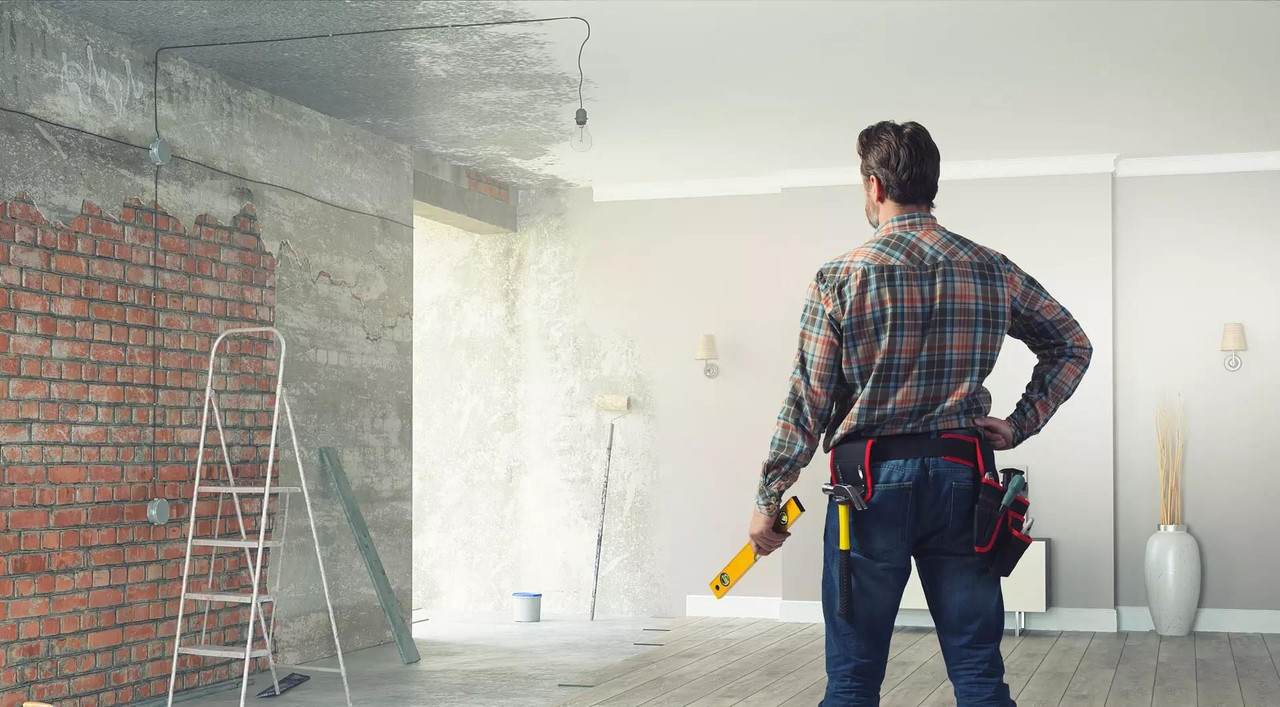Bricklayer Services
by siteadmin

Bricklayers construct, repair, and erect walls, partitions, arches, pavings, fireplaces, and chimneys. They also apply toppings, overlays, and stains to concrete.
They learn through structured trade training over a number of years. They use hand tools as well as power construction tools.
Bricklayers must be able to work outdoors and in confined spaces as well as on scaffolding. This is physically demanding work that requires manual dexterity and the ability to think sequentially.
A bricklayer can build walls, patios, driveways, and just about anything else made from masonry materials. He can also repair existing structures. He can do this manually or with the use of machines such as hydraulic jacks and mechanical hand tools.
Bricklayers can work for construction companies, or they may be self-employed. They must comply with the health and safety regulations of their employer. This includes wearing protective clothing such as gloves and eyewear, and ensuring that the building site is safe. They must also follow specific health and safety procedures such as avoiding contact with wet mortar.
Masonry walls are usually constructed in sections called courses. A good bricklayer can lay a wall in one day, depending on the size of the structure. This is achieved by building a framework on the ground and then laying bricks against it. A good bricklayer can also cut and shape bricks for decorative features, such as chimneys.
A bricklayer should check the quality of bricks and mortar before starting a job. He should also test the strength of the foundation. He should not try to save money by using cheap bricks that can fall apart easily, or by reducing the thickness of the wall.
He should always use a level to keep the wall straight and should make sure that each course is the same height as the previous one. He should also mark each line on the wall with a builder’s line by bending a thin piece of card in two and resting it against the edge of the bricks. This keeps the line exactly on the top edge of the bricks. The first brick in a wall should be laid on the footing, with its frog (indented) face towards the line. The brick should be placed so that it overlaps the next one by about half. The bricklayer should then cut off the excess brick with a scutch tool.
The wall cavity should be filled with brick ties or bricks of the same type as those used in the rest of the wall. The ties help to prevent dampness and are especially important in areas of high rainfall. He should then mix a small amount of latex-fortified mortar, tinting it with pigments if necessary to match the color of the original masonry.
Brick flooring creates a dramatic, Old World look that enhances rustic home designs. It’s usually found in informal rooms, such as sunrooms or mudrooms. It’s durable and non-combustible, which makes it ideal for floors near wood stoves and fireplaces. Brick flooring requires sealing to protect it from stains. Penetrating sealers soak into the surface and leave most of its texture and original coloring intact. Film-forming sealers (such as acrylic or polyurethane) create a coating over the top of the brick, and their use dulls the color of the brick.
The cost of hiring a bricklayer to lay your floor depends on the size and type of brick you need and how much work needs to be done. Some bricklayers charge per day, while others prefer to calculate their labour costs based on the number of bricks they need to cover a given area.
Before beginning the task of laying brick on your floor, make sure that the floor is completely dry and dust free. It’s also important to make sure that the space is able to accommodate the brick tiles you have selected. If you’re using a kiln brick, for example, it may be best to install the floor in the kitchen or other areas that will be used frequently.
A bricklayer will typically need a power-wet saw with a diamond blade for cutting brick. They may also be able to rent a power drill and other tools from tool rental centers. Some bricklayers even use their own portable power tools, which they can bring with them to each job site.
After the bricks are cut to the correct length they will be placed on a mortar bed and laid with a trowel handle or wooden mallet. The mortar should be well mixed and sufficiently thick to allow the bricks to be set properly.
After a few days of curing the bricks will be ready to grout. The grout should be a light gray color to complement the natural brick color. Some bricklayers may choose to use white grout, but this can change the appearance of the brick floor and is not recommended for a floor that will be used in high-traffic areas.
Bricklayers construct and repair walls, floors, partitions, chimneys, and fireplaces using brick, terra cotta, precast masonry panels, concrete blocks or other materials. They also erect and repair foundations and other masonry structures in accordance with blueprints and specifications. They may also install and repair fences, gates, sidewalks, and driveways made from these materials. They often use mortar containing cement, aggregate, and water. Bricklayers are also responsible for cleaning, caulking, and pointing to existing masonry structures.
Some bricklaying tasks require a high degree of skill and precision. For example, they must make sure that bricks are laid correctly so that they don’t move or crack over time. They must also be careful to avoid contaminating the ground below, as this could lead to erosion.
It is important for bricklayers to wear protective equipment to prevent injuries such as cuts, burns, and abrasions. They must also use the right tools for each job and follow safety procedures. They must also stay informed about new techniques, equipment, and building materials.
Bricklayers are also skilled at repairing damaged and eroded brick walls. This work is referred to as pointing, repointing, or tuckpointing. This process involves cleaning out the old mortar joints, mixing latex-fortified mortar, and tinting it with pigments if necessary to match the color of the existing mortar. A bricklayer can also help repair damage caused by extreme weather conditions and accidents.
Erosion of brick structures can be caused by many different factors, including weather, gravity, and poor maintenance. In some cases, the erosion can be so severe that the steel reinforcement within the structure is exposed to moisture and rust. Brick wall deterioration can also be caused by improper installation or by vibrations from machinery.
When it comes to repairing erosion, it is essential for bricklayers to understand the differences in porosity between the original brick and the new mortar used to repair it. If the new mortar doesn’t match in porosity, it can cause the structure to fail within a few years. Professional bricklayers are trained to notice erosion before it causes major problems and know the correct methods for restoring eroded structures.
A successful bricklayer has good attention to detail and a thorough knowledge of the construction process. They must be able to interpret work orders and determine the materials required for each job. They must also be able to calculate angles and vertical and horizontal alignments for the various courses of brickwork. Bricklayers often have assistants to help them prepare and mix the mortar, as well as move building materials around the worksite.
Some bricklayers specialize in particular types of masonry materials, such as gypsum block, the hollow tile used in partitions, or terra-cotta products. Others, known as refractory masons, build linings for furnaces and other high-temperature equipment.
Bricklayers construct and repair walls, floors, fences, and other masonry structures. They work with a variety of masonry materials, including clay bricks, concrete blocks, and other types of building materials in mortar. They also erect and repair veneer and full brick construction, partitions, and arches.
In constructing walls, brick layers must ensure they are stable and durable. They may use different types of concrete and masonry materials to achieve this, including clay bricks and cement-bonded sand. They must also ensure that their constructions are watertight. To do this, they can either use a waterproof membrane or a series of weep holes in the walls.
A bricklayer needs to be detail-oriented and has excellent interpersonal skills. They must be able to communicate well with their supervisors and other members of the construction team. Bricklayers should also be able to use a range of power tools. They may also need to travel between construction sites in order to fulfill their duties. They should be familiar with occupational health and safety regulations.
As the world becomes more environmentally conscious, bricklayers are beginning to focus on sustainability in their work. They can do this by using recycled materials, and by educating their clients on sustainable building practices. They can also help to reduce waste by recycling old bricks and by sourcing materials locally. These efforts can make a significant difference in the amount of waste that is generated by the construction industry. This can have a positive impact on the environment and save businesses money in the long run. In addition, it can also reduce the amount of carbon dioxide released by the construction industry.
https://www.bricklayerperthwa.com.au/
Bricklayers construct, repair, and erect walls, partitions, arches, pavings, fireplaces, and chimneys. They also apply toppings, overlays, and stains to concrete. They learn through structured trade training over a number of years. They use hand tools as well as power construction tools. Bricklayers must be able to work outdoors and in confined spaces as well…
Recent Posts
- Next Day Potty Revolutionizes Event Planning with Premium Portable Restroom Trailer Rentals
- Next Day Potty Revolutionizes Event Planning with Premium Portable Restroom Trailer Rentals
- Clutch ‘N Tote Launches New Sustainable Fashion Brand This August 2024
- Essential Tips on How to Properly Care for Your Dental Implants for Longevity
- Expert Phoenix Palm Tree Trimming Services
